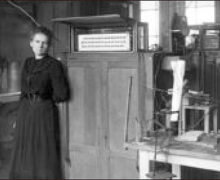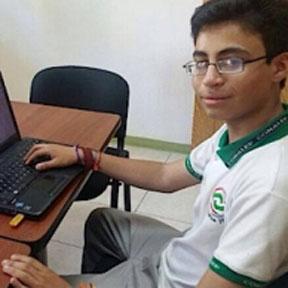
El Vocabulista – Primer Libro Impreso con Caracteres Árabes
The Vocabulist - First Printed Book with Arabic Characters
Lengua Arauiga
En febrero de 1505 es publicado en Granada, “El Vocabulista” o Diccionario Árabe-Castellano de Pedro de Alcalá, siendo el primer libro impreso con caracteres árabes, que ha permitido conocer con precisión el dialecto Andalusí, hablado por los árabes españoles, antes de ser expulsados en 1492.
La obra filológica escrita por Fray Pedro de Alcalá ha sido reconocida universalmente consta de dos libros:
-Arte para ligeramente saber la lengua Arauiga
-Vocabulista Arauiga en letra castellana
Dos obras diferentes en su contenido, pero complementarias por eso Fray Pedro de Alcalá recomienda a su superior para que sean publicadas juntas.
Consecuentemente las dos obras se encuentran reunidas en un solo volumen en el ejemplar R 2158 de la Biblioteca Nacional de España, con el escudo del Arzobispo Hernando de Talavera en portada.
Importancia
La finalidad de esta obra era facilitar el entendimiento recíproco con los moriscos, comenzando por el conocimiento mutuo de las lenguas árabe y castellana, necesario tanto para los granadinos, como para los pastores que comenzaban la tarea de su conversión o, como dice el autor “sacar a esta gente nuevamente convertida de las tinieblas y muchos errores”.
Se trata de una obra única para conocer el idioma y la cultura árabe andalusí, al momento de la conquista de Granada.
Recién en 1514, se publica en Italia el Libro de Horas (Kitāb ṢalāŤ al-sawā‘ī), primer libro impreso completamente en árabe, aunque su edición fue rechazada y desconocida oficialmente por el Imperio Otomano.
Fray Pedro de Alcalá
Por sus conocimientos de la lengua árabe se ha pensado que Fray Pedro de Alcalá era un morisco nacido en el Reino Nazarí de Granada, antes de la conquista y luego converso al cristianismo, pero el Fray Alcalá siempre negó esta versión, sosteniendo que sabia poco de dicha lengua, que aprendió con mucho esfuerzo y estudio.
Sin embargo, el dominio del árabe que demuestra en su obra, indica que podía ser de educación familiar ancestral y que, por ello, se le encomendase la tarea, pues no es nada fácil el lenguaje castellano-árabe, sino se tiene un conocimiento profundo de esa materia
En realidad estos conocimientos profundos del árabe apoyan la hipótesis de que Alcalá fuera un converso, un cristiano nuevo, cuya primera lengua fue el árabe.
Conversión Musulmana
La impresión de la obra en Granada a pocos años de la expulsión de los moriscos de España revela el objetivo del Arzobispo de Granada, Hernando de Talavera, en lograr la conversión “voluntaria” de los musulmanes granadinos que aun residían en el lugar.
Para ello fomentó el estudio del árabe entre los sacerdotes de su diócesis, para explicarles las bondades de la religión cristiana en su propia lengua, por supuesto las conversiones fueron muy escasas y el obispado retomo la utilización de “métodos más duros” para lograr la transformación de nuevos cristianos.
Revisiones
En 1805 el Fray Patricio de la Torre, monje de San Lorenzo de El Escorial, hizo una revisión del “Vocabulista”, el trabajo se conserva en el códice H.II.23. En el siglo XXI, Elena Pezzi ha realizado una nueva revisión, creando una nueva estructura, que tituló “Vocabulario de Pedro de Alcalá”.
The Vocabulist – First Printed Book with Arabic Characters
Arauian language
In February 1505, “El Vocabulista” or Pedro de Alcalá’s Arabic-Castilian Dictionary was published in Granada, being the first book printed with Arabic characters, which has allowed us to accurately know the Andalusian dialect, spoken by the Spanish Arabs, before be expelled in 1492.
The philological work written by Fray Pedro de Alcalá has been universally recognized and consists of two books:
-Art to slightly know the Arauiga language
-Arauiga vocabulist in Spanish lyrics
Two different works in their content, but complementary for this reason, Fray Pedro de Alcalá recommends to his superior that they be published together. Consequently, the two works are found together in a single volume in copy R 2158 of the National Library of Spain, with the coat of arms of Archbishop Hernando de Talavera on the cover.
Importance
The purpose of this work was to facilitate reciprocal understanding with the Moors, beginning with the mutual knowledge of the Arabic and Spanish languages, necessary both for the people of Granada, and for the shepherds who began the task of their conversion or, as the author says “ bring these newly converted people out of darkness and many errors.”
It is a unique work to learn about the Andalusian Arabic language and culture, at the time of the conquest of Granada.
It was not until 1514 that the Book of Hours (Kitāb ṢalāŤ al-sawā‘ī) was published in Italy, the first book printed entirely in Arabic, although its edition was officially rejected and unknown by the Ottoman Empire.
Fray Pedro de Alcalá
Due to his knowledge of the Arabic language, it has been thought that Fray Pedro de Alcalá was a Moorish born in the Nasrid Kingdom of Granada, before the conquest and later converted to Christianity, but Fray Alcalá always denied this version, maintaining that he knew little about said language, which he learned with much effort and study.
However, the command of Arabic that he demonstrates in his work indicates that he could be of ancestral family education and that, therefore, he was entrusted with the task, since the Spanish-Arabic language is not easy at all, if one does not have a deep knowledge of that matter
In fact, this deep knowledge of Arabic supports the hypothesis that Alcalá was a convert, a new Christian, whose first language was Arabic.
Muslim conversion
The printing of the work in Granada a few years after the expulsion of the Moors from Spain reveals the goal of the Archbishop of Granada, Hernando de Talavera, to achieve the “voluntary” conversion of the Granada Muslims who still resided in the place.
For this, he promoted the study of Arabic among the priests of his diocese, to explain to them the benefits of the Christian religion in their own language. Of course, conversions were very few and the bishopric resumed the use of “harder methods” to achieve transformation. of new Christians.
Reviews
In 1805, Fray Patricio de la Torre, a monk from San Lorenzo de El Escorial, made a revision of the “Vocabulist”, the work is preserved in the codex H.II.23. In the 21st century, Elena Pezzi has carried out a new revision, creating a new structure, which she titled “Vocabulario de Pedro de Alcalá”.
























